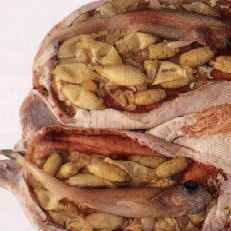
Main Page Content Page Next Page
| The majority of sharks give birth to live young instead of laying eggs. Most are ovoviviparous, producing large yolky eggs which are kept inside the motherís uterus. The developing pup, or embryo, is fed by the yolk sac attached to its belly. When this is used up, the pup is fully developed and ready to be born. In some shark species, the first pups that develop eat eggs and also embryos in their motherís uterus. In sand tiger and mako sharks, only one of the young cannibals survives in each side of the paried uteri, having eaten all its unborn brothers and sisters. A more complex pregnancy occurs in a few viviparous sharks, such as lemon, blue, and bull, as well as hammerhead sharks, in which nourishment from the motherís blood passes through the placenta to the embryo via the umbilical cord. This is also how human babies develop, as well as other placental mammals, such as dogs and elephants. |
 |
As bigeye thresher pups develop inside the uterus, they feed on bundles of un-fertilized eggs. The pups have long tails - just like their parents. |
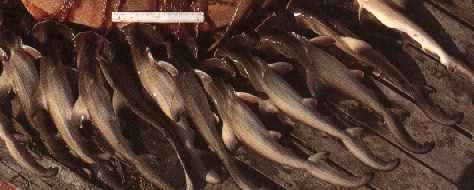 |
Hammerhead pups Hammerhead sharks give birth to live young that are little replicas of their parents. In one litter, up to 40 pups may be born, with their head projections bent back. In the uterus, each pup is connected to its mother by an umbilical cord. |
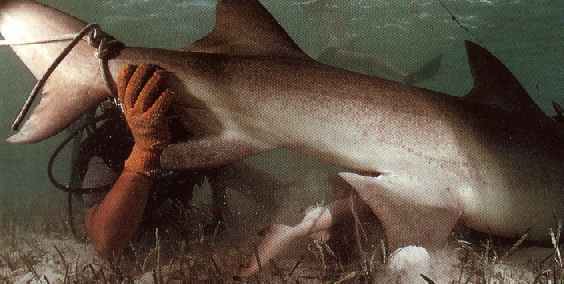 |
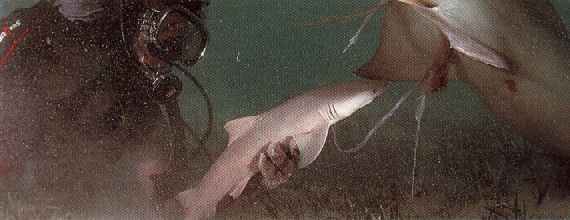 |
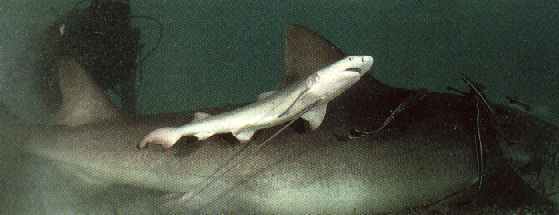 |
 |
| A unique sequence of photographs show the actual birth of a lemon shark pup Negaprion brevirostris. This event, which had never been seen in a shark in the wild before, took place in Bimini Lagoon in the Bahamas. The mother - which was about 2.6 m (8.5 ft) long - had been captured for study and was anchored to the scientistís boat by a hook in her mouth and a rope around her tail. As each pup was born it would lie briefly on the ocean floor before swimming away, straining against the umbilical cord until it broke, leaving a small depression in the baby sharkís belly. The remoras swimming around the mother would dart in rapidly after each pup was born to devour the afterbirth. Altogether 10 pups were born, each about 610 mm (2 ft) long, although the last mother these baby sharks must survive on their own. |